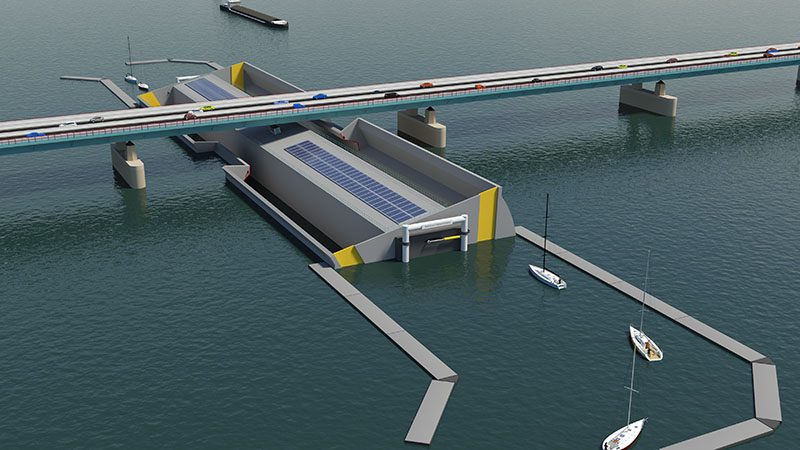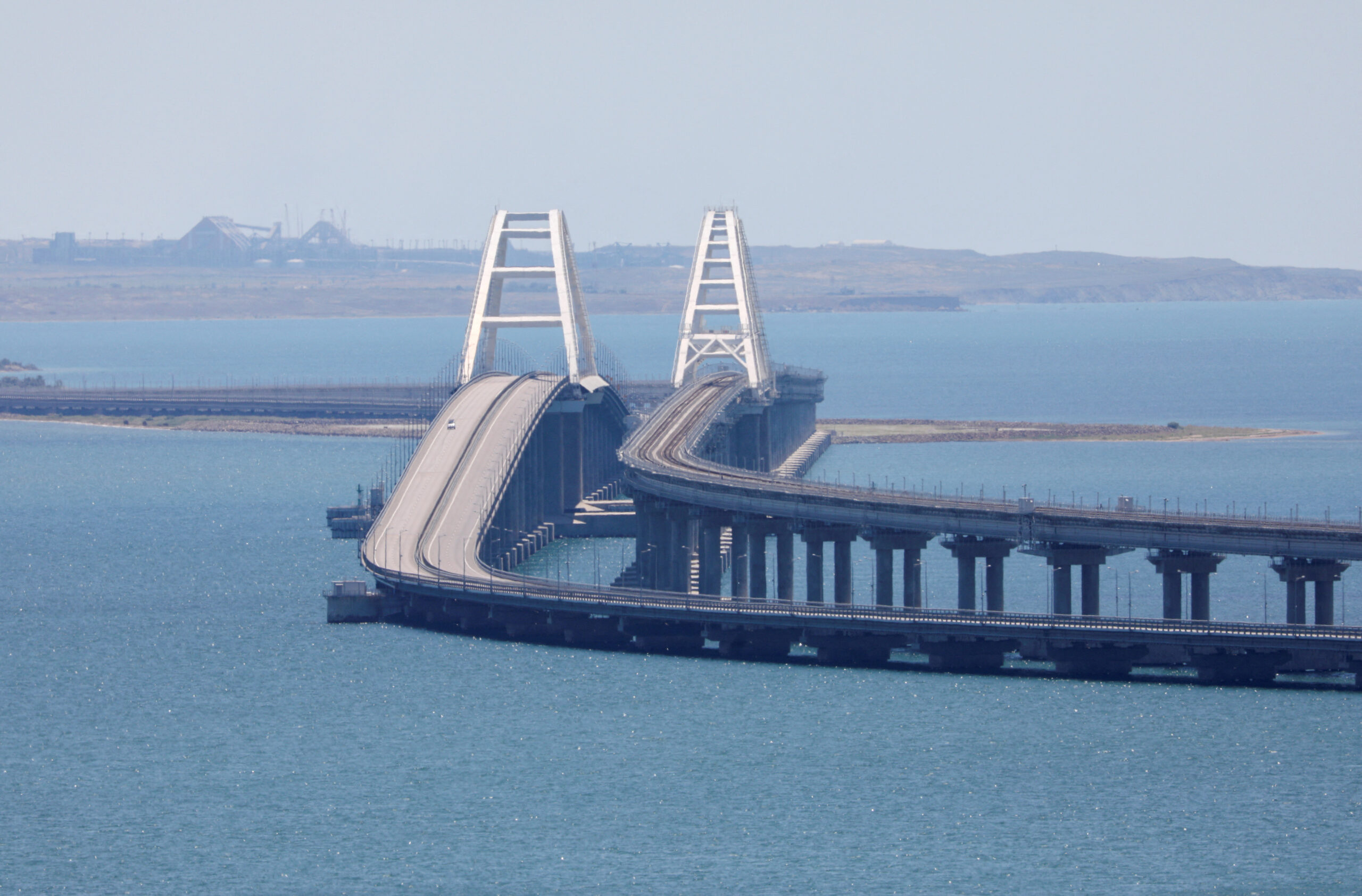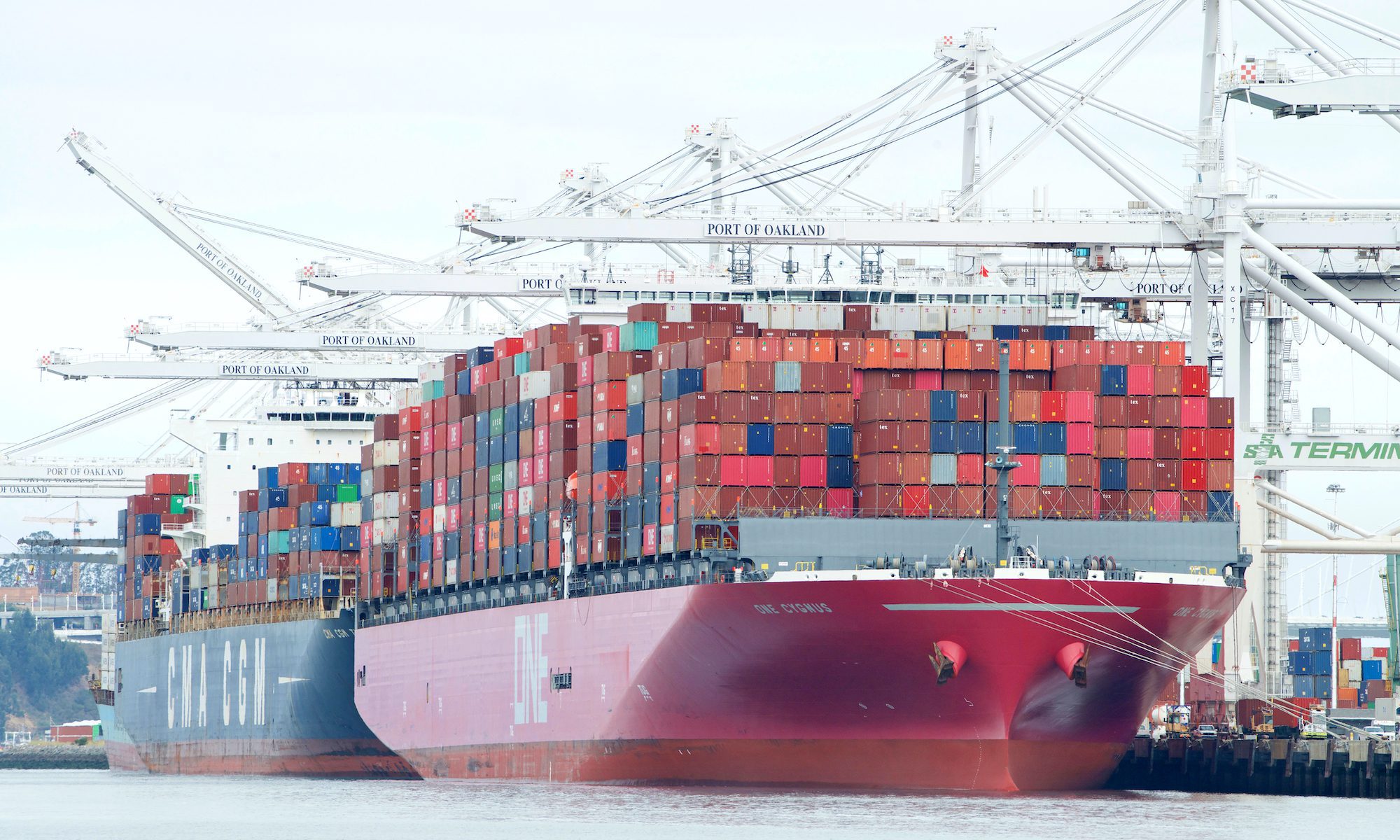Illustration (c) Royal HaskoningDHV
A Dutch engineering firm has come up with a unique solution that it believes could be the answer to road and waterway traffic congestion caused by the raising or opening of low movable bridges so that tall vessels can pass below.
To solve this problem, Royal HaskoningDHV proposes that instead opening or raising the bridge itself, why not just use gravity to lower boats underneath?
The concept is actually fairly simple. The design uses a sort of floating lock that tilts back and forth, lowering and raising the water levels inside chambers beneath the bridge just like any other lock does.
Royal HaskoningDHV says that by using this ’tilting lock’, water levels can actually be adjusted by as much as 8 meters in the case of the Zeeland Bridge in the Netherlands and cost as little as $76 million, or approximately 60 million euros, to fabricate and install.
“Once the yacht is in the channel, the lock will tilt and ‘submerge’ the boat by 8 meters,” explains Carolus Poldervaart, a Royal HaskoningDHV designer. “After the boat has passed under the bridge the lock reverts to its original position to level the water inside and outside the channel again. This way almost all yachts will be able to pass under busy movable bridges without the bridge having to open. No more waiting traffic, no more waiting boats.”
Not only does the concept sound simple, it could actually be fairly energy efficient, especially considering the costs and energy requirements associated with building and operating movable bridges.
Poldervaart adds: “The lock tilts 32 degrees in three minutes and it takes 30 seconds to set the tilting ‘in motion’. In normal weather conditions this uses 0.04 kWh – as little as an ecolamp needs to burn for four hours.”
According to Royal HaskoningDHV, stopping the tilting motion actually produces energy, as would installed solar panels, creating a renewable energy source that will be used in the lock’s operation.
Royal HaskoningDHV says that the lock itself will be made of steel and can be prefabricated and then transported to its final location, enabling 15 to 30 ‘oversized’ yachts per hour to pass the bridge without it opening.
Check out the video below for an illustration of the concept and be sure to let us know what you think in the comments:

 Join The Club
Join The Club











